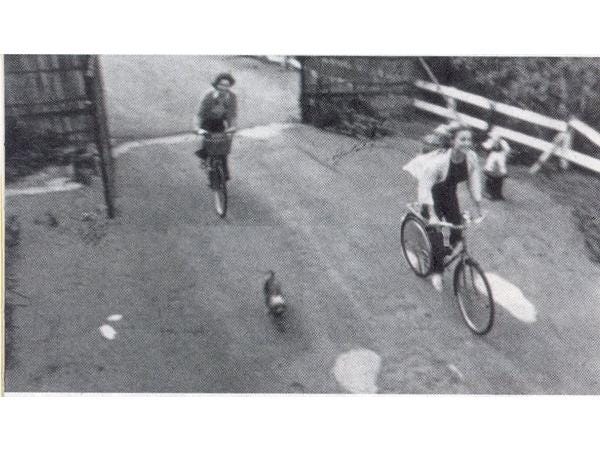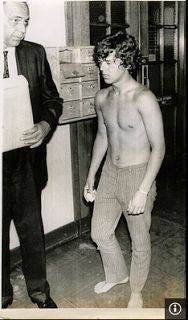📻 The Forgotten Victim: Who Was Stephen Parent, Really?
Clock Radios, Cover-Ups, and the Pool Boy Mafia: Re-examining the First Casualty of the Cielo Drive Murders
🩸 The Manson Family murders remain one of the most infamous crimes in American history. And while names like Sharon Tate, Jay Sebring, and Abigail Folger are burned into the public memory, the story of Stephen Parent—the first victim that night—remains deeply underexplored.
🎥 I recently did a livestream responding to a video by Chaos author Tom O’Neill, who shared new documents and interviews that cast Parent’s life—and his death—in a very different light. Below is a summary of that discussion, with slides from my stream and key analysis. You’ll find Tom’s original video linked at the bottom.
⏰ A Clock Radio at Midnight?
According to the official story, Stephen Parent was an 18-year-old student visiting caretaker William Garretson to sell him a clock radio. But some details don’t sit right:
❓ Why was he making a sale so late at night, on a hot summer evening?
🛑 Why did his body show defensive wounds, indicating he fought back?
🪪 And why, despite official reports, was there a delay in identifying his body, even though he had ID on him?
These are not the hallmarks of a quick execution or a random bystander. They suggest struggle, panic, and perhaps a deeper story.
🕳️ A Troubled Past and Disturbing Connections
Tom’s video revealed several facts about Parent’s life that were omitted or buried:
👨⚖️ He spent two years in juvenile detention for burglary and was on probation at the time of his death.
🙏 He had a bizarre connection to Father Robert Byrne, the parish priest who ended up identifying his body.
😨 Byrne introduced him to Edgar Cahn, a defrocked priest accused of serial sexual abuse of minors. Cahn claimed they only talked about audio equipment, but coworkers described troubling behaviour—like Cahn calling to check up on Parent constantly, sometimes bordering on harassment
.
🧱🚲 The Fence Was Already Down
Some reports claimed Stephen Parent knocked over the fence in a frantic escape—but 🖼️ a photograph shows Sharon Tate and Abigail Folger riding their bikes through the front gate earlier that day, and the adjacent section of fence is already visibly down.
This proves 🧩 part of the fence had been damaged before the murders ever occurred.
🧪 Paint from the fence was found on Parent’s car, meaning he made contact with it—likely while turning around hastily, trying to drive away after seeing or hearing something horrific.
🏃♂️💥 This suggests not a casual exit, but a sudden, panicked escape attempt.
🛑 A Pattern of Theft
A recurring pattern of theft marked Stephen Parent’s life. He was reportedly fired from a previous job at an audio studio for stealing, and further thefts were discovered after his death at the store where he worked. He had also served time in juvenile hall for burglary.
💭 Based on these details—and his history as an altar boy with links to abusive priests—I speculated in the stream that Parent’s stealing may have been compulsive, potentially a subconscious cry for help rooted in trauma. It’s a tragic possibility, and one that could suggest a deeper psychological struggle behind his behaviour.
🎛️ Was He There to Steal?
The Cielo Drive house wasn’t just home to Hollywood stars—it contained valuable audio equipment, used for film editing, soundtracks, and reportedly even adult material. A high-end stereo system, absent from official records like Helter Skelter, was also present.
Given Parent’s background and the items of interest at the house, some researchers wonder: was he there to steal something?
🤔 If he intended to rob the house—or even just stumbled into something sensitive—his presence may not have been as innocent as it first appeared.
👤 Garretson’s Silence: Trauma and Secrets?
Caretaker William Garretson, the only survivor on the property, has always been a shadowy figure.
🧠 He claimed to hear nothing, yet was found just feet away from the crime scene. At one point, he was dragged outside to view the bodies and asked, “Why did you do this?”
He denied involvement, but the trauma clearly scarred him, and he never gave a full account of what happened.
🏳️🌈 Some speculate that Garretson may have feared revealing involvement in the so-called “house boy” scene in Hollywood, a world of exploitation that often intersected with powerful men and vulnerable youth.
💅 The Pool Boy Mafia?
Naturally, in a livestream about Parent and Garretson, we discussed the theory of the “pool boy mafia”—a network of young, often gay or bisexual men who provided various “services” to wealthy clients in Hollywood.
🧼 Parent may have known or even recognised Tex Watson, possibly through the music scene or shared social circles.
💬 “I won’t tell anyone…” — If this phrase was indeed said, it opens up a terrifying motive: was Parent silenced because he recognised someone involved?
🧠 Background on the Theory:
Tex Watson lived at Dennis Wilson’s house before Manson showed up. Was he a “house boy” too?
Bobby Beausoleil lived with Kenneth Anger and was involved in sex, drugs, and experimental film before stealing Anger’s car and leaving.
Garretson cared for Rudy Altobelli’s dogs and lived rent-free—another hallmark of the “house boy” setup.
💰 There’s also the case of a house boy stealing $5,000 from Harrigan and Doyle. Was that theft real, or a cover story for something more complicated?
Again, this is all theory. ❗ There is no confirmed link between Parent and the Manson Family. But these patterns raise valid questions about the kind of world he was living in—and whether he got caught in a web of secrets far beyond his control.
🕳️ Unanswered Questions
Stephen Parent’s story is far more complex than the narrative suggests.
Why was he really at Cielo Drive that night?
Did he know someone involved?
Was he there to steal something?
Was he silenced for what he saw—or who he recognised?
🧩 The contradictions, cover-ups, and character connections add a new dimension to the motives behind that horrific night in August 1969.
🔗 Watch the Full Livestream
🖥️ Click below to watch my full livestream breakdown, where I explore all of these theories in more depth, along with the original documents shared by Tom O’Neill:







